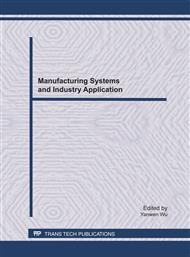[1]
O. Hachour. The proposed hybrid intelligent system for path planning of Intelligent Autonomous Systems. INTERNATIONAL JOURNAL OF MATHEMATICS AND COMPUTERS IN SIMULATION. 2009, 3(3): 133–145.
Google Scholar
[2]
M.W. Maimone and J. J. Biesiadecki, "The Mars Exploration Rover Surface Mobility Flight Software: Driving A.
DOI: 10.1109/aero.2006.1655723
Google Scholar
[3]
G. Ishigami, A. Miwa, K. Nagatani, and K. Yoshida, Terramechanics-Based Analysis on Slope Traversability for a Planetary Explorati mbition, " IEEE Aerospace Conference, Big Sky, Montana, March 2006. on Rover, The 25th International Symposium on Space Technology and Science (ISTS 2006), pp.1025-1030, (2006).
Google Scholar
[4]
I. Halatci, C. Brooks, and K. Iagnemma. A study of visual and tactile terrain clas-sification and classifier fusion for planetary exploration rovers. Robotica 26(6): 767-779 (2008).
DOI: 10.1017/s0263574708004360
Google Scholar
[5]
M. Bajracharya, A. Howard, L. Matthies, B. Tang, and M. Turmon. Autonomous Off-Road Navigation with End-to-End Learning for the LAGR Program. Journal of Field Robotics, Volume 26 Issue 1, pp.3-25, January (2009).
DOI: 10.1002/rob.20269
Google Scholar
[6]
T. Howard, C. Green, A. Kelly, and D. Ferguson. State space sampling of feasible motions for high-performance mobile robot navigation in complex environments. Journal of Field Robotics, 2008, 25(6-7): 325–345.
DOI: 10.1002/rob.20244
Google Scholar
[7]
K. Doogyu, K. Jayoung, L. Jihong, J. Hanbyul, and In-so K. Utilizing Visual Information for Path Planning of Autonomous Mobile Robot. Proceedings of the World Congress on Engineering and Computer Science 2009 Vol II WCECS 2009, October 20-22, 2009, San Francisco, USA.
Google Scholar
[8]
A. Angelova, L. Matthies, D. Helmick, and P. Perona. Learning and prediction of slip from visual information. Journal of Field Robotics, 2007, 24(3): 205–231.
DOI: 10.1002/rob.20179
Google Scholar
[9]
L.F. Zhou. RESEARCH ON LUNAR ROVER INTELLIGENT NAVIGATION IN VIRTUAL ENVIRONMENT. Harbin Institute of Technology, Ph.D. thesis, (2007).
Google Scholar


